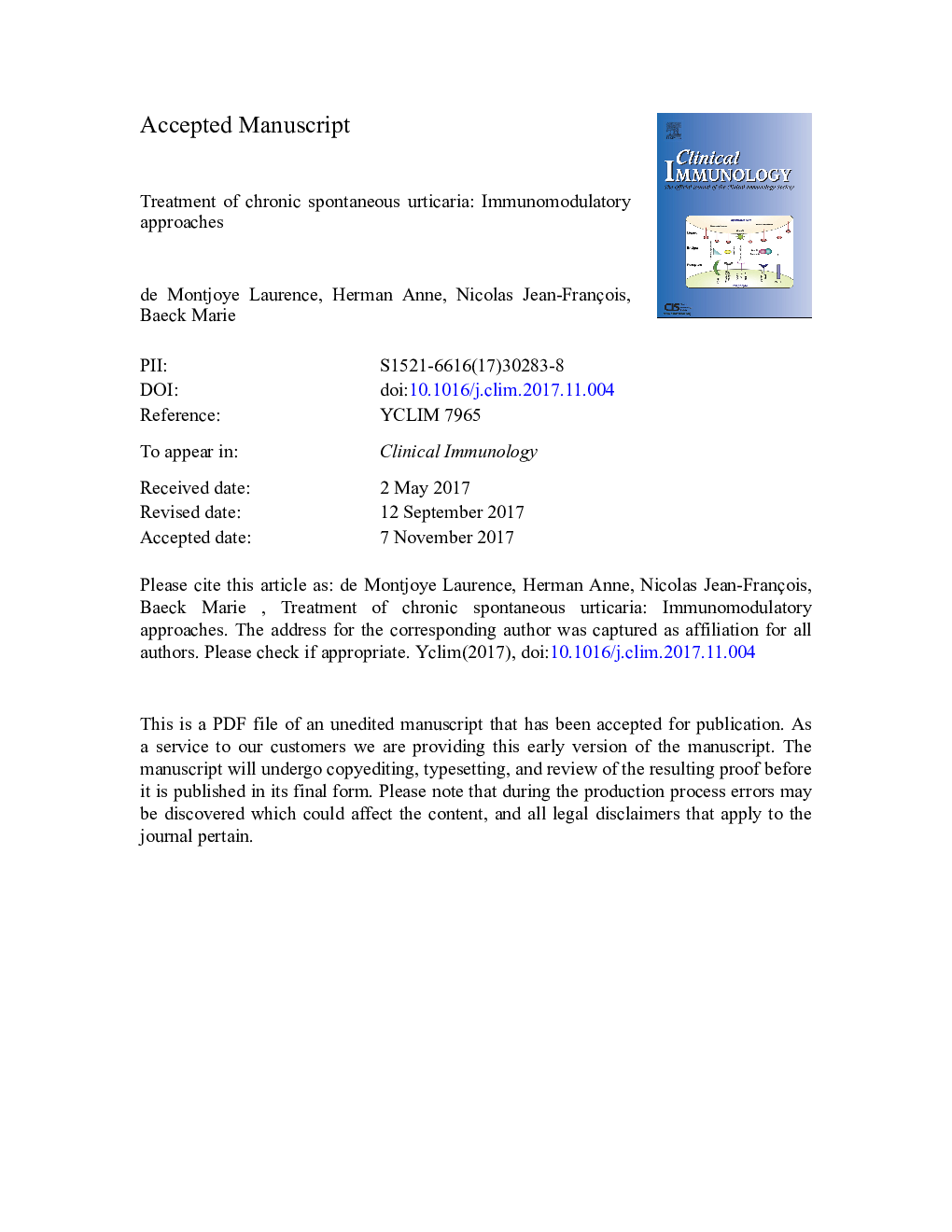| Article ID | Journal | Published Year | Pages | File Type |
|---|---|---|---|---|
| 8721324 | Clinical Immunology | 2018 | 29 Pages |
Abstract
This paper summarizes and reviews the mechanisms of action and data concerning efficacy of recommended treatments as well as other treatments that have been tested, independently of the outcomes, in the management of chronic spontaneous urticaria. Due to the central role of mast cells, basophils and histamine in the pathophysiology of this disease, H1-antihistamines remain the first-line treatment. However, current knowledge about this complex disease, also recognizes an important role for T lymphocytes, B lymphocytes, and autoantibodies. Implications of these others mediators thus provide further targets for treatment. Indeed, agents previously used to treat other autoimmune and inflammatory diseases, have demonstrated efficacy in chronic spontaneous urticaria and are therefore potential therapeutic alternatives for antihistamine unresponsive patients.
Keywords
Related Topics
Life Sciences
Immunology and Microbiology
Immunology
Authors
de Montjoye Laurence, Herman Anne, Nicolas Jean-François, Baeck Marie,
